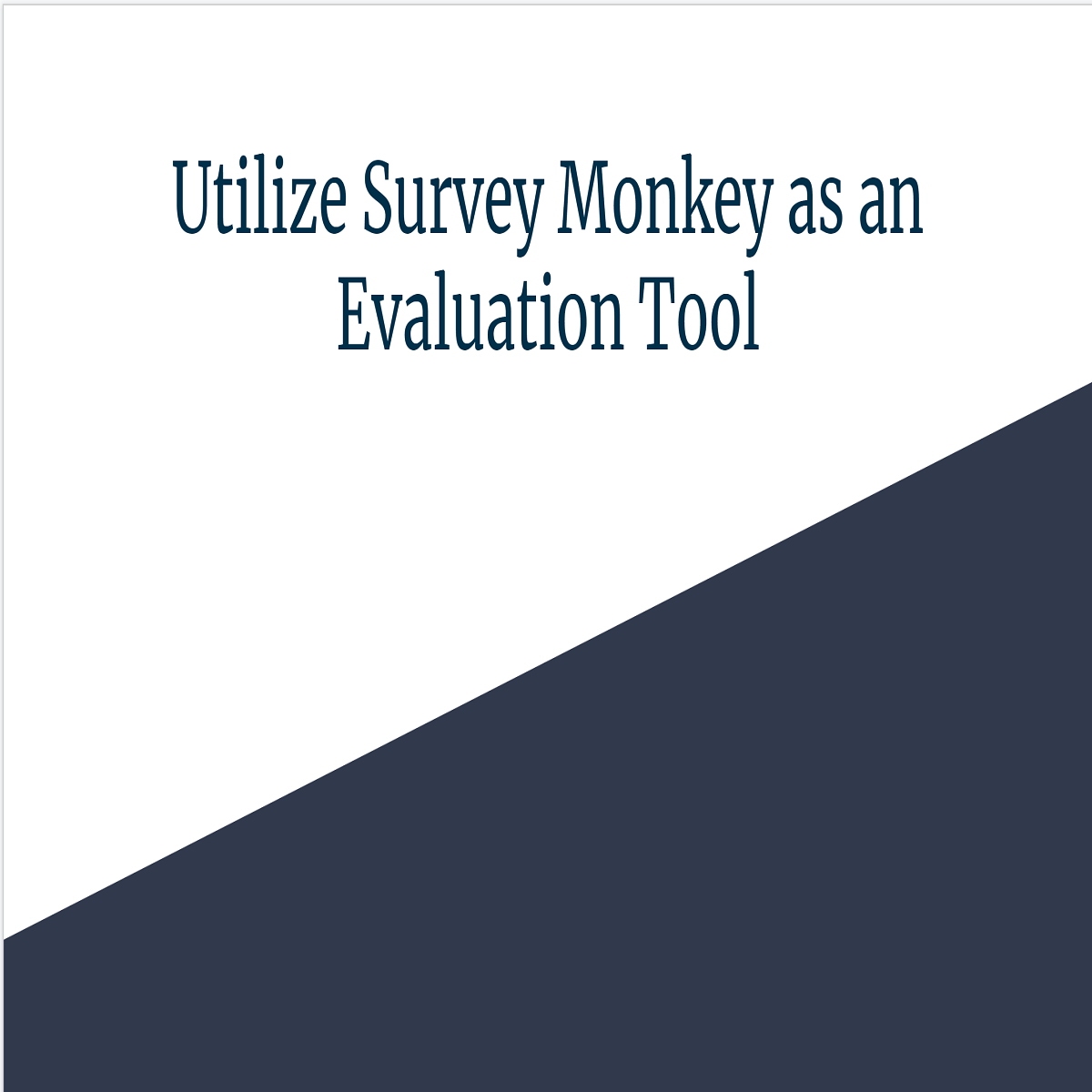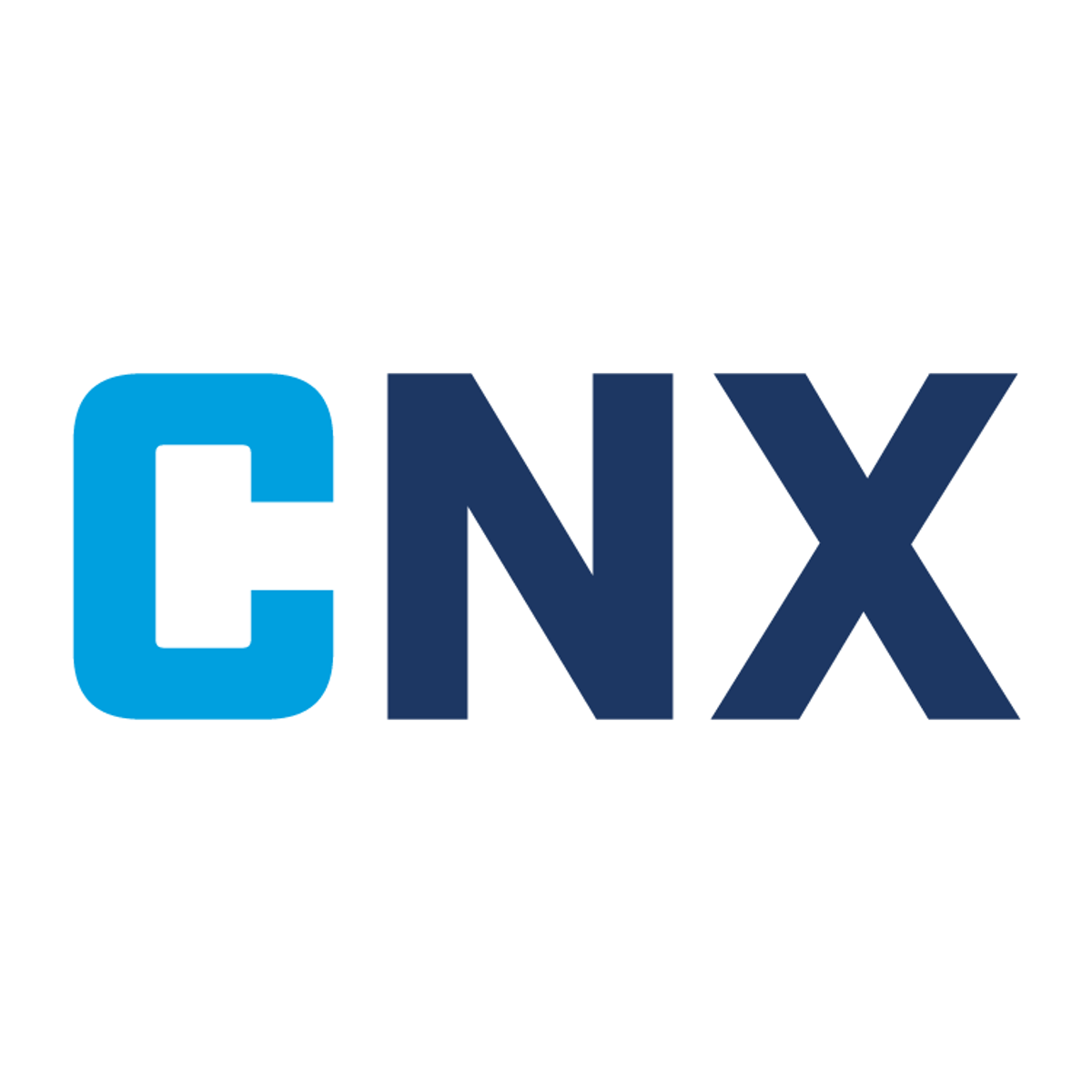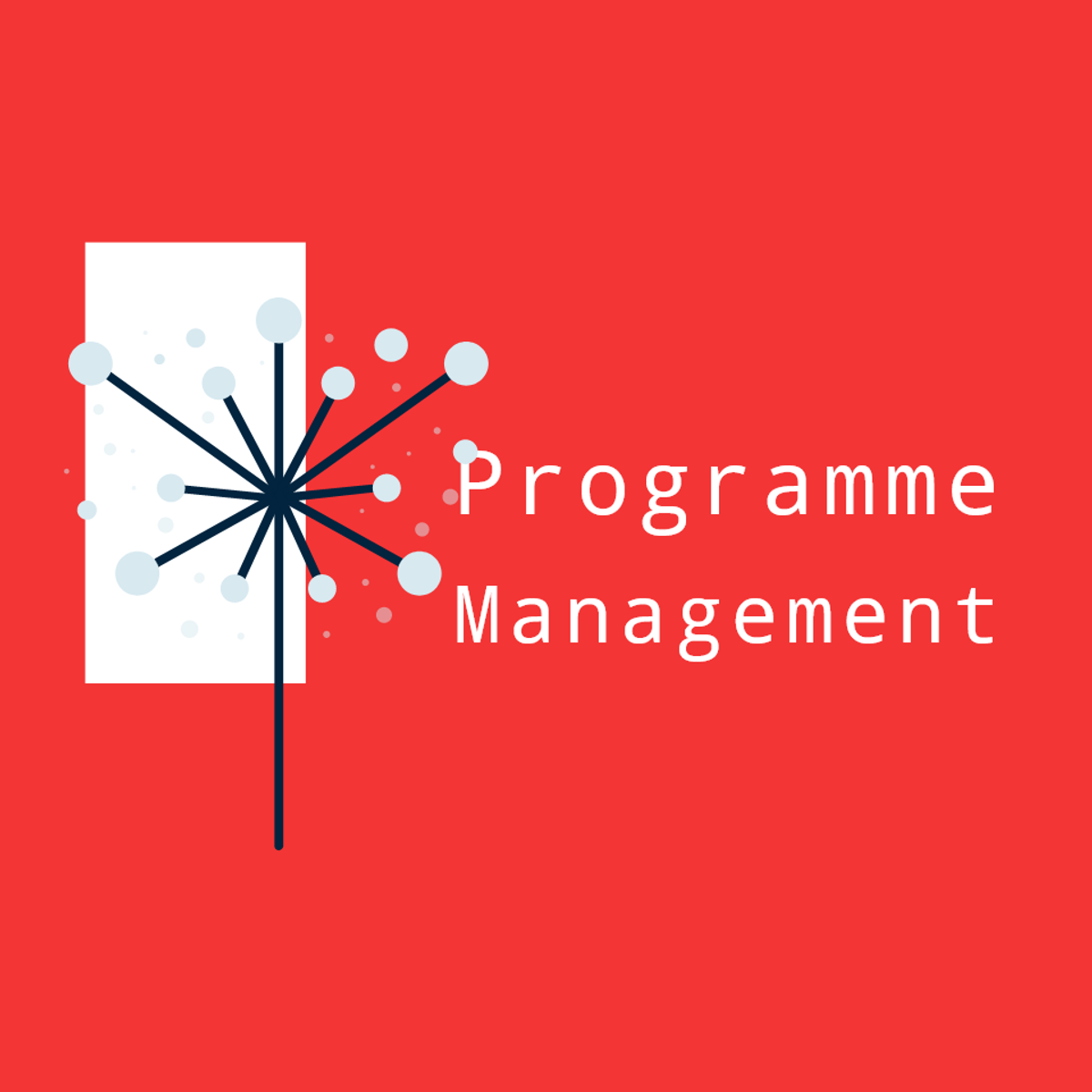Training and Development Manager
Exploring a Career as a Training and Development Manager
A Training and Development Manager plays a crucial role within an organization, focusing on enhancing the skills, knowledge, and performance of its workforce. They design, implement, and oversee programs that aim to improve employee capabilities, align training with business objectives, and foster a culture of continuous learning. This role sits at the intersection of human resources, education, and business strategy, making it a dynamic and influential position.
Imagine being the architect of employee growth, identifying skill gaps and building programs to bridge them. Consider the satisfaction of seeing employees flourish and contribute more effectively thanks to the initiatives you spearheaded. This career offers opportunities to impact organizational success directly by developing its most valuable asset: its people. For those passionate about education, strategy, and human potential, it's a field brimming with engaging challenges.
Overview of Training and Development Manager
This section provides a foundational understanding of the Training and Development Manager role, its scope, and its place within the broader organizational context. It's designed to offer clarity, especially for those new to corporate structures or the field of human resources.
Defining the Training and Development Manager Role
A Training and Development (T&D) Manager is responsible for an organization's learning strategy and its execution. Their primary goal is to ensure employees have the necessary skills and knowledge to perform their jobs effectively and contribute to the company's goals. They assess company-wide developmental needs to drive training initiatives.
The scope of this role is broad, encompassing everything from analyzing training needs to designing curriculum, facilitating sessions, managing budgets, and evaluating program effectiveness. They work strategically to align learning programs with overall business objectives, ensuring that training investments yield tangible results in productivity and performance.
These managers often lead a team of trainers, instructional designers, and coordinators. They are key figures in shaping the learning culture within an organization, promoting continuous development and adaptation to new challenges and technologies.
Key Industries Employing Training and Development Managers
Training and Development Managers are essential across nearly every industry. Large corporations in sectors like finance, technology, healthcare, manufacturing, and retail frequently have dedicated L&D departments headed by these managers. The need to keep employees updated on industry regulations, technological advancements, and company procedures fuels demand.
Government agencies and non-profit organizations also employ T&D Managers to ensure their staff possess the necessary skills for public service or mission-driven work. Educational institutions themselves require T&D professionals to manage faculty and staff development.
Consulting firms often hire T&D experts to advise client organizations on learning strategies or even provide outsourced training services. The ubiquity of this role underscores the universal importance of workforce development for organizational success.
Primary Objectives and Goals
The core objective for a T&D Manager is to enhance workforce capabilities. This involves identifying current and future skill gaps through needs assessments, performance reviews, and collaboration with department heads. Upskilling and reskilling employees to meet evolving job demands is a central focus.
Ensuring compliance with legal and industry regulations through mandatory training is another critical objective. This includes areas like workplace safety, ethics, data privacy, and anti-discrimination policies. T&D Managers must stay current on regulatory changes affecting their industry.
Ultimately, the goal is to improve overall organizational performance. This can manifest as increased productivity, better employee retention, improved customer satisfaction, smoother adoption of new technologies or processes, and a stronger leadership pipeline. Measuring the impact of training initiatives against these goals is key.
Distinction from Related Roles
While Training and Development Managers often work within or closely with the Human Resources department, their role is distinct from an HR Generalist. Generalists handle a wider range of HR functions like recruitment, benefits, and employee relations, whereas T&D Managers specialize solely in learning and development.
Instructional Designers focus specifically on creating learning materials and experiences (courses, manuals, e-learning modules). While T&D Managers oversee this function, their role is broader, involving strategy, budget, needs analysis, and evaluation. They manage the entire learning ecosystem.
Organizational Development (OD) Managers focus on broader systemic changes to improve organizational effectiveness, which may include training but also encompasses areas like structure, culture, and change management. T&D is often a tool used within larger OD initiatives.
Key Responsibilities and Daily Tasks
Understanding the day-to-day work provides a concrete picture of the Training and Development Manager role. Activities range from strategic planning to hands-on program management and collaboration across departments.
Designing Employee Training Programs
A significant part of the role involves designing comprehensive training programs. This starts with identifying learning objectives based on organizational needs and skill gaps. Managers select appropriate instructional methods, which could range from traditional classroom training and workshops to e-learning modules, simulations, or blended approaches.
They oversee the creation or sourcing of training content, ensuring it is engaging, accurate, and relevant. This might involve working with internal subject matter experts, instructional designers, or external vendors. The design must consider adult learning principles and cater to diverse learning styles.
Program design also includes logistical planning, such as scheduling sessions, coordinating facilitators, managing enrollments, and ensuring necessary resources (technology, materials, venues) are available. Accessibility and scalability are important considerations, especially in large or global organizations.
These courses offer foundational knowledge in instructional design and training development. They cover essential theories and practical applications for creating effective learning experiences.
Evaluating Training Effectiveness via Metrics
Designing training is only half the battle; evaluating its impact is crucial. T&D Managers are responsible for establishing metrics to measure the effectiveness of learning initiatives. Common models like the Kirkpatrick Model (Reaction, Learning, Behavior, Results) are often used.
Data collection methods include surveys, quizzes, skills assessments, performance observations, and tracking key business indicators (KPIs) before and after training. Analyzing this data helps determine if learning objectives were met and if the training translated into improved job performance or business outcomes.
Reporting on training effectiveness to stakeholders, including senior leadership, is a key responsibility. This involves demonstrating the return on investment (ROI) of training programs and using evaluation results to continuously improve future initiatives. Data analysis skills are increasingly important in this aspect of the role.
These courses introduce methods for evaluating training programs and using data effectively. Understanding how to measure impact is critical for demonstrating value.
These books delve into performance improvement and evaluation methodologies. They provide frameworks for assessing the impact of training and development efforts.
Collaborating with Department Heads
Effective T&D Managers don't work in isolation. They collaborate closely with department heads and business leaders across the organization. This partnership is essential for accurately identifying specific training needs and ensuring programs align with departmental goals and challenges.
These collaborations help tailor training content to be relevant to different teams or roles. Managers might work with Sales to develop product training, with IT for software rollout training, or with Operations for process improvement workshops. Understanding the unique context of each department is vital.
Building strong relationships with stakeholders facilitates buy-in for training initiatives and helps secure participation. It also allows T&D Managers to stay informed about emerging business priorities that may require new learning solutions.
Budget Management for Training Initiatives
Training and Development Managers are typically responsible for managing the L&D budget. This involves forecasting training costs, allocating resources effectively, and tracking expenditures. They must justify budget requests based on projected ROI and strategic importance.
Budgetary decisions include choosing between internal development versus external vendors, selecting learning technologies (like Learning Management Systems or LMS), and funding different types of programs. Cost-effectiveness is a constant consideration.
Negotiating contracts with external training providers, software vendors, and consultants is often part of the role. Financial acumen and the ability to make sound investment decisions regarding learning initiatives are essential skills.
Formal Education Pathways
While practical experience is highly valued, a solid educational foundation is typically expected for Training and Development Manager roles. Various academic paths can lead to this career, often combining elements of education, business, and psychology.
Relevant Undergraduate Degrees
A bachelor's degree is usually the minimum requirement. Common fields include Human Resources, Business Administration, Education, or Organizational Psychology. Degrees in Communications or related social sciences can also provide a relevant foundation.
Coursework in areas like adult learning theory, instructional design, organizational behavior, psychology, communication, and business management provides valuable knowledge. An internship in an HR or training department during undergraduate studies can be highly beneficial.
While a specific degree isn't always mandatory, employers look for candidates with a demonstrated understanding of learning principles, business operations, and human behavior within organizations. Strong analytical and communication skills, often honed through university education, are essential.
Graduate Programs
Many Training and Development Managers pursue graduate degrees to deepen their expertise and enhance career prospects. A Master's degree in Human Resource Development (HRD), Organizational Development (OD), Instructional Design, or Adult Education is highly relevant.
An MBA with a concentration in Human Resources or Organizational Behavior is another popular route, particularly for those aiming for senior leadership roles where strong business acumen is critical. These programs often blend strategic management concepts with HR-specific knowledge.
Graduate studies allow for specialization in areas like e-learning, leadership development, performance consulting, or learning analytics. A master's degree can provide a competitive edge, especially in larger organizations or for higher-level positions.
This book provides an integrative look at leader development, often a focus in graduate studies. It explores theories and practices relevant to advancing leadership capabilities within organizations.
Professional Certifications
Certifications are highly regarded in the T&D field and can validate expertise and commitment to the profession. The Certified Professional in Training Management (CPTM) or the Associate Professional in Talent Development (APTD) and Certified Professional in Talent Development (CPTD) from the Association for Talent Development (ATD) are prominent credentials.
Certifications from the Society for Human Resource Management (SHRM), such as the SHRM-CP (Certified Professional) or SHRM-SCP (Senior Certified Professional), while broader HR credentials, are also valuable as they cover talent development competencies. Certifications often require meeting specific education and experience criteria and passing an exam.
Continuing education is usually required to maintain these certifications, encouraging lifelong learning. Pursuing relevant certifications can enhance credibility and marketability, particularly for those transitioning into the field or seeking advancement.
These courses provide preparation for HR certifications or fundamental HR skills, including training and development aspects. Certifications often signal a commitment to the profession and validated knowledge.
Research-Oriented Paths (PhD Opportunities)
For those interested in research, academia, or high-level consulting in organizational learning, a PhD can be a viable path. Doctoral programs in fields like Human Resource Development, Organizational Behavior, Industrial/Organizational Psychology, or Higher Education Administration allow for deep scholarly work.
PhD research might focus on topics such as learning transfer, leadership development effectiveness, the impact of technology on training, cross-cultural training strategies, or workplace learning theories. Graduates often pursue careers as university professors, researchers in think tanks, or senior consultants.
A PhD requires significant commitment and is geared towards individuals passionate about advancing the theoretical underpinnings and evidence-based practices of the training and development field. It's a path focused on contribution to knowledge rather than solely practice management.
Online Learning and Skill Development
The rise of online learning platforms offers flexible and accessible ways to acquire the skills needed for a Training and Development career. Whether supplementing formal education or facilitating a career pivot, online courses provide valuable opportunities for skill-building and exploration.
Core Competencies via Online Learning
Many core T&D competencies can be developed or enhanced through online courses. Topics readily available include instructional design principles, adult learning theories, curriculum development, e-learning design, and training facilitation techniques. Platforms like OpenCourser aggregate vast catalogs of relevant courses.
Technical skills, such as proficiency in Learning Management Systems (LMS), authoring tools (like Articulate Storyline or Adobe Captivate), video editing software, and survey tools, can often be learned effectively online. Data analysis skills for evaluating training effectiveness are also increasingly taught via online platforms.
Soft skills crucial for the role, such as communication, presentation skills, stakeholder management, and leadership, can also be honed through specialized online courses, often featuring interactive exercises and peer feedback.
These courses cover foundational HR skills, learning and development principles, and management fundamentals, all readily accessible online. They are excellent starting points for building core competencies.
Balancing Certifications with Practical Experience
While online courses and certifications are valuable, practical experience remains critical. Employers look for candidates who can apply theoretical knowledge in real-world settings. Seek opportunities to design or deliver training, even on a small scale, perhaps within a volunteer organization or a current role.
Building a portfolio showcasing training materials you've designed, presentations you've delivered, or evaluations you've conducted can demonstrate practical skills to potential employers. Online learning can equip you with the knowledge, but applying it is key.
Consider using online courses to learn a skill, then find a project (personal or professional) to practice it. This combination strengthens your resume and interview talking points much more than certificates alone. OpenCourser's Learner's Guide offers tips on structuring self-learning paths.
Exploring Niche Areas Online
Online platforms excel at offering specialized courses in niche T&D areas. This allows learners to explore specific interests or develop expertise relevant to particular industries or organizational needs. Examples include diversity and inclusion training, sales training, technical skills training, leadership coaching, or compliance training.
Expertise in areas like LMS administration, gamification in learning, or designing for virtual/hybrid environments can be cultivated through targeted online courses. This specialization can make you a more attractive candidate for certain roles.
Use online learning to stay current with emerging trends, such as AI in learning or microlearning strategies. OpenCourser’s extensive library, easily searchable, allows you to find courses on almost any T&D sub-specialty imaginable.
These courses delve into specific, increasingly important areas like Diversity, Equity, and Inclusion (DEI) and coaching. Online learning makes exploring these specialized topics accessible.
Portfolio-Building through Self-Designed Modules
One powerful way to leverage online learning is to use the acquired knowledge to create tangible work samples for a professional portfolio. After taking a course on instructional design, for instance, create a short e-learning module on a topic you know well.
Develop a sample training plan for a hypothetical scenario, outlining needs analysis, objectives, delivery methods, and evaluation strategy. Create presentation slides for a workshop or design a job aid. These artifacts demonstrate your ability to translate theory into practice.
Document projects completed as part of online courses, especially those involving design or development work. Platforms like OpenCourser sometimes feature project-based courses designed specifically for portfolio building. Sharing your portfolio online (e.g., via LinkedIn or a personal website) makes it accessible to recruiters.
These project-based courses focus on creating specific deliverables, ideal for portfolio building. They offer hands-on practice in tools commonly used in T&D roles.
Career Progression and Promotion Pathways
The path to becoming a Training and Development Manager often involves starting in related entry-level roles and gaining experience. Understanding typical progression routes can help aspiring professionals plan their careers effectively.
Entry-Level Roles
Common starting points include roles like Training Coordinator, HR Assistant (with training duties), or Learning and Development Specialist. These positions often involve administrative tasks, logistics coordination, assisting with training delivery, and maintaining training records.
Some individuals enter the field from related areas like teaching, instructional design, or even customer service roles where they gained experience training others. Early roles provide exposure to the T&D function and opportunities to develop foundational skills.
Gaining experience in needs assessment, basic instructional design, and platform administration (like LMS) in these early roles is valuable. Demonstrating initiative and a passion for learning can accelerate progression.
This book covers the essential aspects of human resource management, providing context for entry-level roles. Understanding the broader HR function is beneficial for T&D professionals.
Mid-Career Transitions
Individuals often transition into T&D Manager roles after gaining experience in other functional areas. HR Generalists with a strong interest in development, experienced trainers, or even managers from operational departments who demonstrated a knack for coaching and development might move into this specialization.
These transitions often require supplementing existing experience with targeted learning in instructional design, adult learning principles, and training evaluation. Online courses and certifications can be particularly helpful for bridging knowledge gaps during such pivots.
Demonstrating strategic thinking and the ability to link training initiatives to business outcomes becomes increasingly important at this stage. Experience managing projects or small teams can also facilitate the move into a management role.
This book explores HR strategy, relevant for those moving into management roles where aligning T&D with business goals is key. Strategic thinking is crucial for mid-career advancement.
Senior Roles and Advancement
Experienced Training and Development Managers can advance to roles like Director of Learning & Development, Head of Talent Development, or even Chief Learning Officer (CLO) in larger organizations. These positions involve greater strategic responsibility, larger budgets, and broader influence on organizational direction.
Senior leaders focus on long-term learning strategy, leadership development programs, succession planning, organizational culture change, and integrating learning with overall talent management strategy. They often report directly to senior executives or the CHRO.
Strong leadership skills, business acumen, strategic vision, and the ability to influence at the executive level are crucial for these senior roles. Advanced degrees (like an MBA or specialized Master's) and significant experience managing complex L&D functions are typically required.
This classic book offers insights into leadership challenges relevant at senior levels. Developing leadership capabilities is essential for career progression in T&D.
Cross-Functional Leadership Opportunities
The skills honed as a T&D Manager – strategic thinking, communication, influence, project management, understanding human behavior – are transferable to other leadership roles. Experienced T&D professionals may move into broader HR leadership positions, organizational development roles, or even operational leadership roles.
Their understanding of capability building and performance improvement can be valuable in areas like change management, talent management, or even consulting. The ability to develop people is a core leadership competency applicable across functions.
Networking across departments and gaining exposure to different facets of the business can open doors to these cross-functional opportunities. A T&D background provides a unique perspective on how to leverage human capital for organizational success.
Industry Trends Impacting Training and Development Managers
The field of Training and Development is constantly evolving, influenced by technological advancements, shifting workforce demographics, and changing business needs. Staying abreast of these trends is crucial for T&D Managers.
AI-Driven Personalized Learning
Artificial Intelligence (AI) is increasingly shaping learning platforms. AI can personalize learning paths based on individual needs, roles, and performance data. Adaptive learning systems adjust content difficulty and pacing in real-time, potentially improving engagement and effectiveness.
T&D Managers need to understand how to leverage AI tools for needs analysis, content curation, and evaluating learning impact. This includes selecting appropriate AI-powered platforms and ensuring ethical use, mitigating potential biases in algorithms.
While AI offers powerful capabilities, the human element in T&D remains vital for coaching, mentoring, facilitating complex skill development, and fostering a supportive learning culture. Managers must blend technology with human interaction effectively. Recent reports, like those from major consulting firms, often highlight the growing role of AI in workforce development, a trend T&D professionals must navigate.
Remote and Hybrid Workforce Training Demands
The shift towards remote and hybrid work models presents unique challenges and opportunities for training. T&D Managers must design programs accessible and engaging for dispersed teams, utilizing virtual instructor-led training (VILT), asynchronous e-learning, and collaborative online tools.
Ensuring equitable access to development opportunities for all employees, regardless of location, is critical. This involves selecting appropriate technologies, training facilitators for virtual delivery, and fostering a sense of connection and community among remote learners.
Measuring engagement and learning transfer in remote settings requires different approaches than traditional in-person training. T&D Managers are exploring new methods for virtual assessment and performance support. Research from organizations like Gallup highlights the persistence of hybrid work, making proficiency in remote training delivery a core competency.
Focus on Skills and Reskilling
Rapid technological change and evolving business models necessitate a greater focus on continuous reskilling and upskilling. T&D Managers are central to identifying future skill needs and developing agile learning strategies to prepare the workforce.
Skills-based hiring and internal mobility programs are gaining traction, requiring T&D functions to accurately assess employee skills and provide targeted development pathways. This involves a shift from traditional job-based training to more granular, skills-focused learning interventions.
Partnering with business leaders to anticipate future skill requirements and building a culture where employees embrace lifelong learning are key priorities. The ability to quickly deploy relevant training is becoming a competitive advantage for organizations. This trend is frequently discussed in reports by platforms like the World Economic Forum.
These courses directly address the trend of skills-based organizational strategies and reskilling initiatives. Understanding how to implement a skills-first approach is increasingly important.
Globalization and Cultural Sensitivity
As organizations become more global, T&D Managers face the challenge of designing and delivering training across diverse cultural contexts. Content must be culturally sensitive, avoiding biases and respecting local norms and communication styles.
Managing global training teams requires understanding different regulatory environments, languages, and learning preferences. Technology plays a key role in delivering consistent training globally, but localization and cultural adaptation are often necessary for effectiveness.
Developing cross-cultural competence within the workforce itself is often a key training objective managed by the T&D function. This includes building awareness of cultural differences and fostering inclusive collaboration in multinational teams.
Ethical Considerations in Training Design
Training and Development Managers must navigate various ethical considerations to ensure fairness, respect, and responsible practices in their work. These issues are becoming more prominent with the increased use of technology and data.
Bias Mitigation in Learning Technologies
AI and algorithms used in learning platforms can inadvertently perpetuate or even amplify existing biases if not carefully designed and monitored. T&D Managers must be vigilant about potential biases in personalized recommendations, skills assessments, or performance prediction tools.
Selecting vendors who prioritize fairness and transparency in their algorithms is important. Regularly auditing learning technologies for biased outcomes and ensuring diverse representation in training data used to build AI models are crucial mitigation strategies.
Promoting awareness among L&D staff and learners about potential algorithmic bias is also necessary. Ethical considerations should be integral to the selection, implementation, and ongoing management of learning technologies.
Data Privacy in Employee Performance Tracking
Learning platforms often collect vast amounts of data on employee progress, engagement, and even skill levels. T&D Managers have an ethical responsibility to ensure this data is collected, stored, and used responsibly and transparently.
Clear policies regarding data privacy, informed consent from employees, and secure data management practices are essential. Employees should understand what data is being collected, how it will be used (e.g., for personalized learning, performance evaluation), and who will have access to it.
Balancing the benefits of data-driven insights for improving training with the protection of employee privacy is a critical ethical tightrope. Compliance with data protection regulations like GDPR is not just a legal requirement but an ethical imperative.
Cultural Sensitivity in Global Programs
Designing training for a global audience requires careful attention to cultural sensitivity. Content, examples, imagery, and even delivery styles must be reviewed to avoid stereotypes, cultural misunderstandings, or content that might be offensive in certain cultures.
Involving local representatives or cultural experts in the design and review process can help ensure relevance and appropriateness. Providing materials in multiple languages or using universally understood visuals can improve accessibility and inclusivity.
Recognizing that learning preferences and communication styles can vary across cultures is also important. A one-size-fits-all approach may not be effective globally; adaptation and flexibility are key ethical considerations in global T&D.
Balancing Business Goals with Employee Needs
T&D Managers often face pressure to align training directly with immediate business needs and demonstrate ROI. However, they also have an ethical responsibility to advocate for employee development that supports long-term career growth and well-being, even if the direct business impact isn't immediately quantifiable.
Striking a balance between mandatory compliance or job-specific skills training and offering opportunities for personal development, soft skills enhancement, or exploration of future career interests is an ongoing ethical challenge.
Transparent communication about the purpose of different training initiatives and providing employees with some agency in their learning paths can help navigate this tension. Ultimately, fostering a genuine culture of learning benefits both the organization and its employees.
Challenges Faced by Training and Development Managers
While rewarding, the role of a Training and Development Manager comes with its share of challenges. Navigating these obstacles effectively requires strategic thinking, resilience, and strong stakeholder management skills.
Measuring the ROI of Training Programs
Demonstrating the tangible business impact and return on investment (ROI) of training can be notoriously difficult. While reaction and learning are easier to measure, linking training directly to changes in behavior and, ultimately, bottom-line results (like sales increases or cost reductions) requires sophisticated evaluation strategies.
Isolating the effect of training from other factors influencing performance is challenging. T&D Managers need robust evaluation plans, clear metrics aligned with business goals, and the ability to communicate the value proposition of L&D effectively to leadership.
This often involves partnering with other departments to access relevant business data and employing advanced analytical techniques. Building credibility through rigorous evaluation is key to securing ongoing support and resources for training initiatives.
Adapting to Generational Learning Preferences
Today's workforce often comprises multiple generations (e.g., Baby Boomers, Gen X, Millennials, Gen Z), each potentially having different learning preferences, communication styles, and relationships with technology. Designing training that effectively engages this diverse audience is a challenge.
T&D Managers must move beyond stereotypes and understand the nuanced needs of different learner segments. This might involve offering blended learning approaches, incorporating varied technologies, providing flexible learning options, and focusing on relevance and practical application.
Facilitating intergenerational learning and collaboration within training programs can also be beneficial. Creating an inclusive learning environment that respects diverse perspectives and experiences is essential.
Securing Executive Buy-In and Budget
Convincing senior leadership of the strategic importance of training and development, and securing adequate budget and resources, can be an ongoing challenge. L&D is sometimes viewed as a cost center rather than a strategic investment, especially during economic downturns.
T&D Managers must continually advocate for their function by aligning learning strategies clearly with business priorities, demonstrating value through data and success stories, and building strong relationships with key executives. Speaking the language of business and focusing on outcomes is crucial.
Developing a compelling business case for specific training initiatives, outlining expected benefits and ROI, is often necessary to gain approval and funding. Strong negotiation and influencing skills are vital.
Managing Remote Training Logistics and Engagement
Coordinating and delivering effective training for remote or hybrid workforces presents significant logistical and engagement challenges. Ensuring reliable technology access, managing time zone differences, and scheduling sessions convenient for dispersed teams requires careful planning.
Maintaining learner engagement in virtual settings can be difficult due to potential distractions and lack of face-to-face interaction. T&D Managers and facilitators need to employ interactive techniques, foster collaboration, and design engaging virtual experiences to combat "Zoom fatigue."
Building a sense of community and facilitating informal learning opportunities among remote employees also falls under the T&D purview. Finding innovative ways to connect learners and support ongoing development in a virtual environment is a key challenge.
Frequently Asked Questions (Career Focus)
Here are answers to some common questions individuals exploring a career as a Training and Development Manager might have.
What industries offer the highest salaries?
Salaries for Training and Development Managers can vary significantly based on industry, location, company size, and experience level. Generally, industries with high regulatory requirements, complex skill needs, or significant investments in human capital tend to offer higher compensation. These often include sectors like finance, technology, pharmaceuticals, consulting, and energy.
According to the U.S. Bureau of Labor Statistics (BLS), the median annual wage for training and development managers was $121,730 in May 2023. However, top earners in lucrative industries or large metropolitan areas can command significantly higher salaries. Experience and advanced credentials (like a Master's degree or CPTD certification) also positively impact earning potential.
It's advisable to research salary benchmarks specific to your target industry and geographic location using resources like BLS, salary comparison websites, and industry association reports.
Can you transition into this career without an HR background?
Yes, transitioning into Training and Development without a formal HR background is possible, though it often requires demonstrating relevant skills and knowledge. Individuals with experience in teaching, instructional design, project management, or even line management roles where they were involved in coaching and developing team members can make successful transitions.
Highlighting transferable skills such as communication, presentation, project management, and leadership is key. Supplementing existing experience with targeted education – perhaps through online courses or certifications focused on adult learning, instructional design, or HR fundamentals – can bridge knowledge gaps and strengthen your candidacy.
Networking within the T&D field and seeking informational interviews can provide valuable insights and connections. Building a portfolio showcasing any training-related projects you've undertaken can also demonstrate your capabilities to potential employers, even without a traditional HR title.
How does the role differ in startups vs. large corporations?
In large corporations, T&D Manager roles are often more specialized, focusing on specific areas like leadership development, technical training, or sales enablement. They typically operate within established L&D departments with defined processes, larger budgets, and access to sophisticated learning technologies.
In startups or smaller organizations, the T&D Manager (or the person responsible for T&D, who might wear multiple hats) often has a broader scope. They might be responsible for building the entire L&D function from scratch, handling everything from needs analysis to delivery and evaluation with limited resources. The role might be more hands-on and require greater adaptability.
Large corporations offer structure and potentially deeper specialization, while startups provide opportunities for broader impact, agility, and building something new. The preferred environment depends on individual work style and career goals.
Is automation a threat to Training and Development Managers?
While automation and AI are changing aspects of the T&D function (e.g., automating content delivery, personalizing learning paths), they are generally seen as tools that enhance, rather than replace, the T&D Manager. The strategic aspects of the role – needs analysis, aligning learning with business goals, fostering a learning culture, coaching, complex facilitation, and stakeholder management – require human judgment, empathy, and strategic thinking.
Automation can free up managers from routine administrative tasks, allowing them to focus on higher-value strategic activities. However, T&D professionals need to adapt by developing skills in managing learning technologies, interpreting data from automated systems, and understanding how to integrate AI ethically and effectively into learning strategies.
The demand for developing uniquely human skills like critical thinking, creativity, emotional intelligence, and collaboration – areas where T&D plays a key role – is likely to increase, further solidifying the importance of the human element in this field.
What soft skills are most critical for success?
Strong soft skills are paramount for Training and Development Managers. Excellent communication skills (written, verbal, presentation) are fundamental for designing materials, delivering training, and interacting with stakeholders. Interpersonal skills, including relationship-building, empathy, and influence, are crucial for collaboration and securing buy-in.
Leadership skills are needed to manage T&D teams and initiatives. Problem-solving and critical thinking are essential for diagnosing performance issues and designing effective learning solutions. Adaptability and resilience are important for navigating organizational changes and evolving learning needs.
Organizational skills and project management abilities are necessary for managing multiple training programs simultaneously. A passion for learning and helping others grow is perhaps the most foundational trait.
How does this role contribute to organizational KPIs?
Training and Development Managers contribute directly and indirectly to various Key Performance Indicators (KPIs). Directly, they impact metrics like training completion rates, employee satisfaction with training, and improvements in specific skills assessed post-training.
Indirectly, effective T&D initiatives can positively influence broader organizational KPIs. Improved onboarding can reduce early turnover rates. Sales training can increase revenue. Compliance training minimizes legal risks and associated costs. Leadership development strengthens the management pipeline and improves team performance.
Upskilling programs can enhance productivity and quality. By strategically aligning learning programs with business objectives and effectively evaluating their impact, T&D Managers can demonstrate their contribution to achieving critical organizational goals.
Embarking on a career as a Training and Development Manager requires a blend of educational knowledge, practical skills, and a genuine passion for fostering growth in others. It's a challenging yet rewarding field with the potential to significantly impact individuals and organizations. Continuous learning, adaptability, and strategic thinking are key to success in this dynamic profession. Explore the resources available on OpenCourser to build the skills you need for this fulfilling career path.







































